When I got off the bus to Lemon Tree Hostel, I sincerely would not have been surprised if it hadn’t existed.
I was in the middle of a two-lane road with only a dirt shoulder to walk on. I passed an empty café on one side; on the other, a scrap-metal building the size of a football field threatened to collapse. As I paused to take in its magnificent decomposition, I half expected a chunk of the roof to fall in right then and there. What the rot once served, I couldn’t have guessed.
I was holding 140 pounds of luggage, distributed between three backpacks and one XXL wheelie suitcase. I had many important items to bring back to the homeland; among them, a t-shirt of Diego Maradona smoking a cigar in a Che Guevara hat, a hard-cover Atlas of Imaginary Islands, twenty-odd books, and a rusting heavy duty bike lock. I simply couldn’t decide which treasures to leave behind, and I duly suffered the weight of my indecision lugging them down 200 meters of chunky gravel.
As cars and busses passed me with terrifying speed, I took in the setting sun through grimy $3 sunglasses. Mendoza is in a fertile valley lined with vineyards, and the foothills of the Andes stretched out to my left. I wondered what kind of hostel could survive so far from any foot traffic, but then again, the getaway was kind of this place’s selling point.
As soon as I walked in, I knew Lemon Tree was not an ordinary hostel, for the simple reason that ordinary hostels do not employ mannequins of Gru and Walter White at reception.
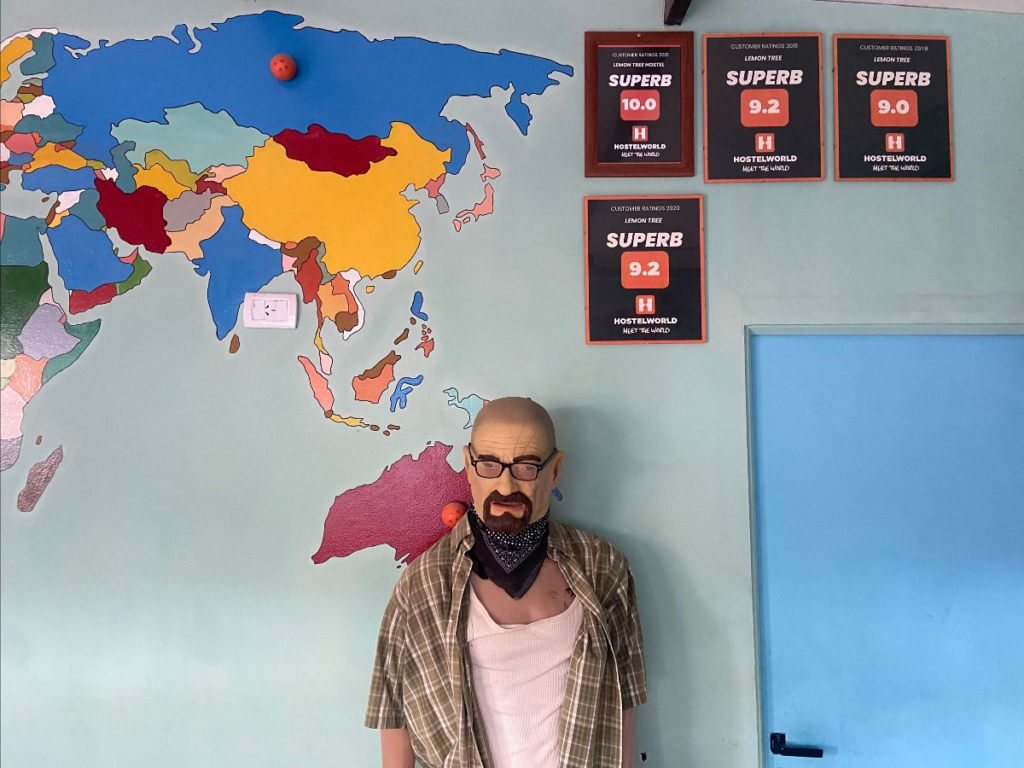
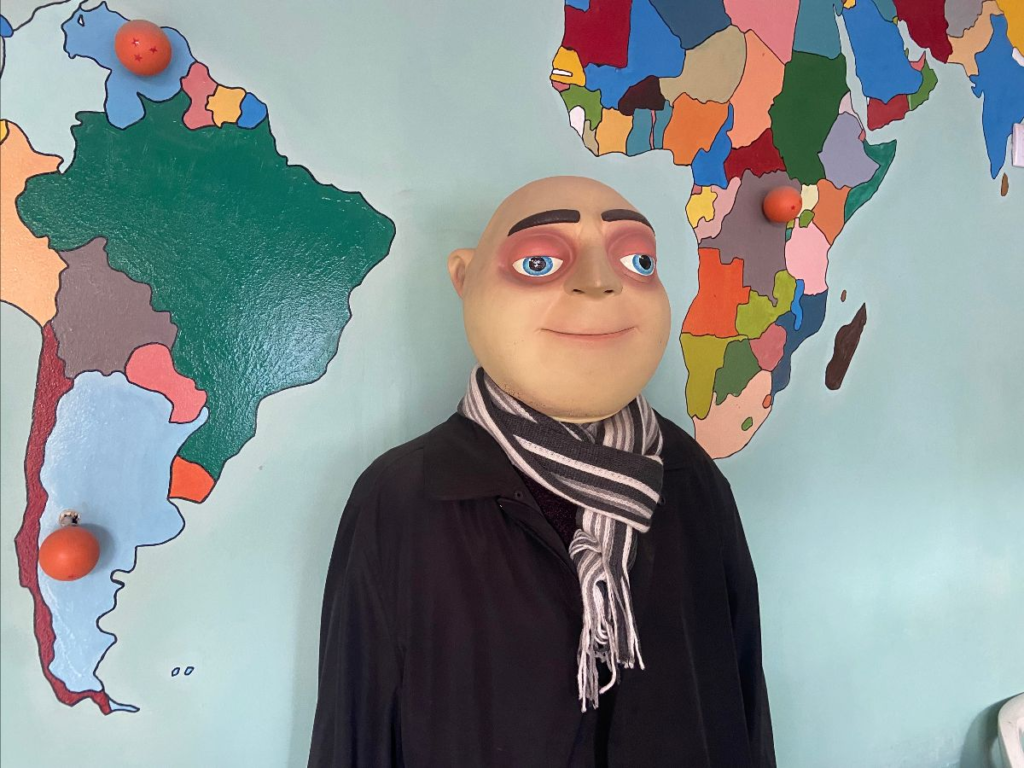
There was no one besides the mannequins at reception, and they made for eerie company, so I poked behind a door. I was greeted by these two…
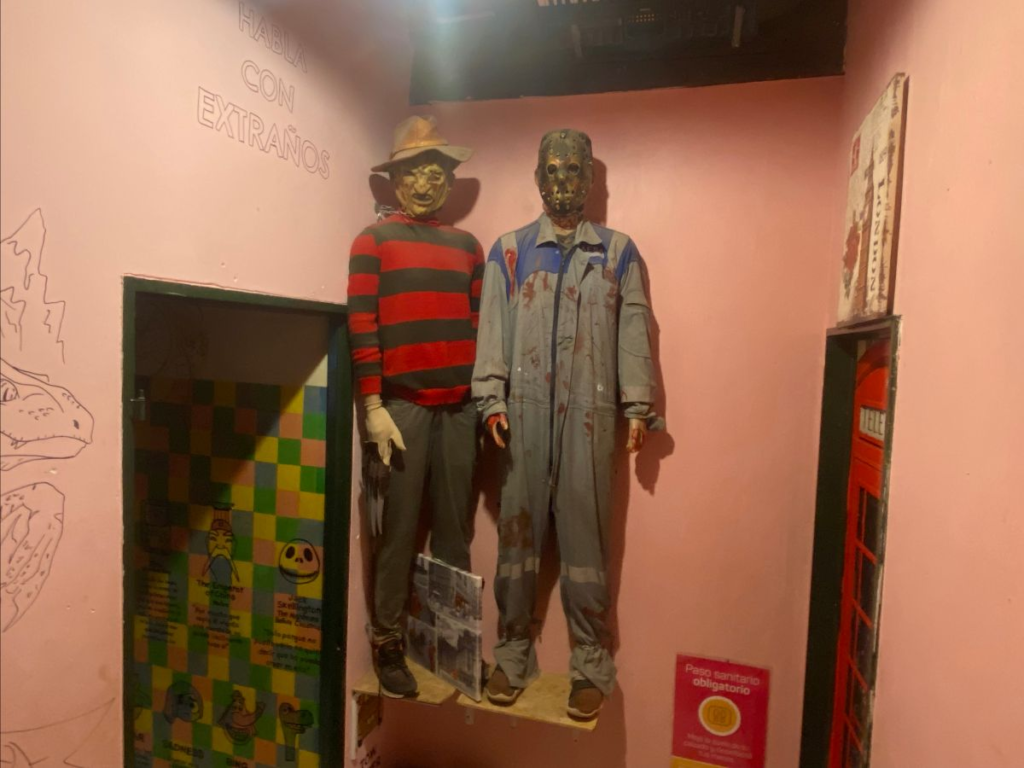
…and noped directly back to reception.
“Talk with strangers,” it says by their heads. A normal quote to have at a hostel, but a questionable quote to put next to two masked serial killers.
Just as I was going to cry for help, a friendly man came and showed me to my room. And what I saw, chained at the neck, in the corner of my bedroom, almost made my heart jump out of my mouth.
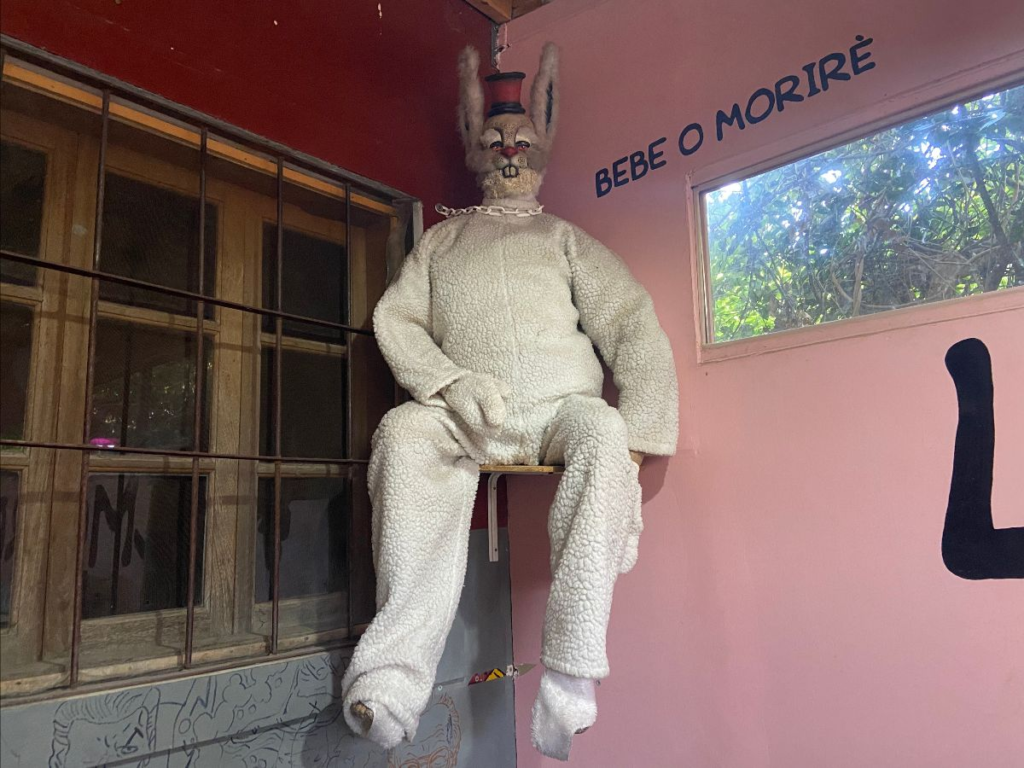
Serial killers in the common area, I can do. But a clown bunny in the bedroom? This guy’s out of his mind.
I was a bit relieved when I googled “Bebe o moriré” and found out it’s a Simpson’s reference (Spanish version / English version). I decided it was just going to be a frieeeendly wittle bunny wabbit and kept my eyes down whenever I walked in the room.
The hostel itself was enormous, with capacity for 135 guests. Almost every wall was decorated with a pop-culture mural, and adorned with a mannequin in the corner. The art ranged from nostalgic to creepy to sincerely beautiful.
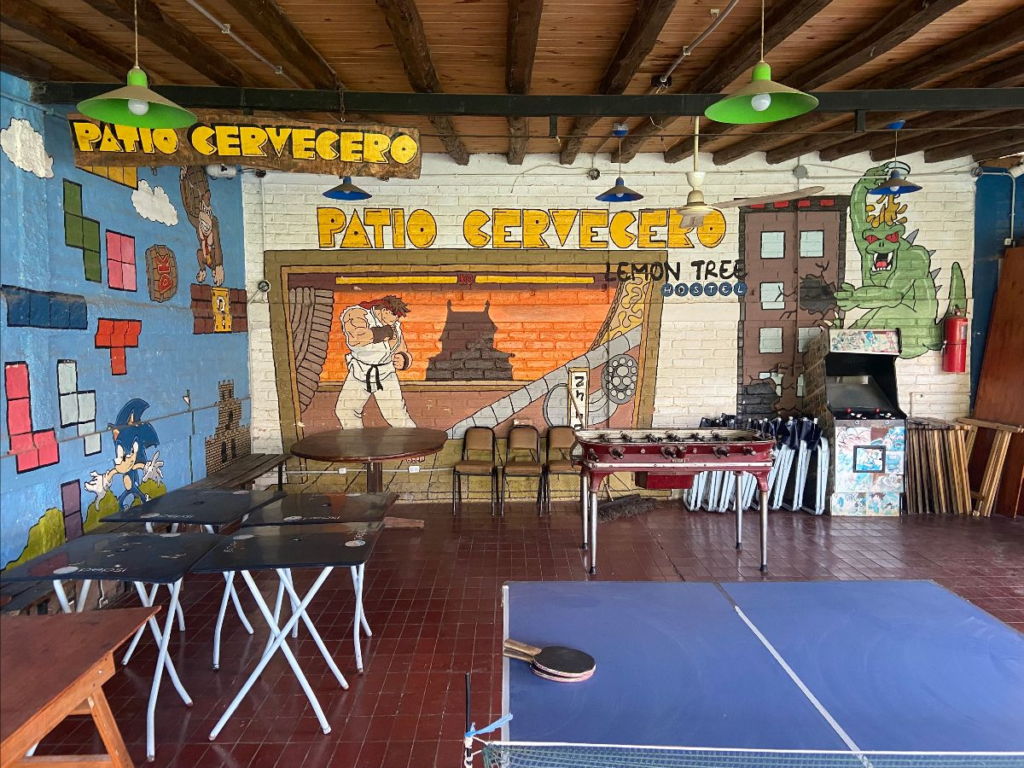
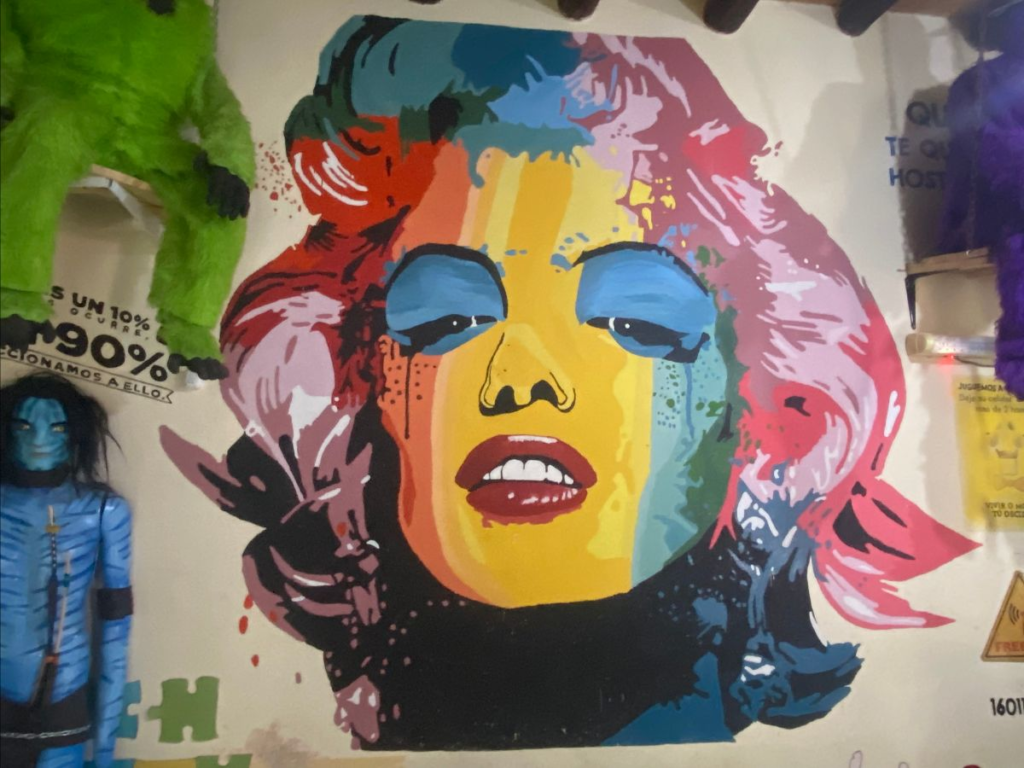

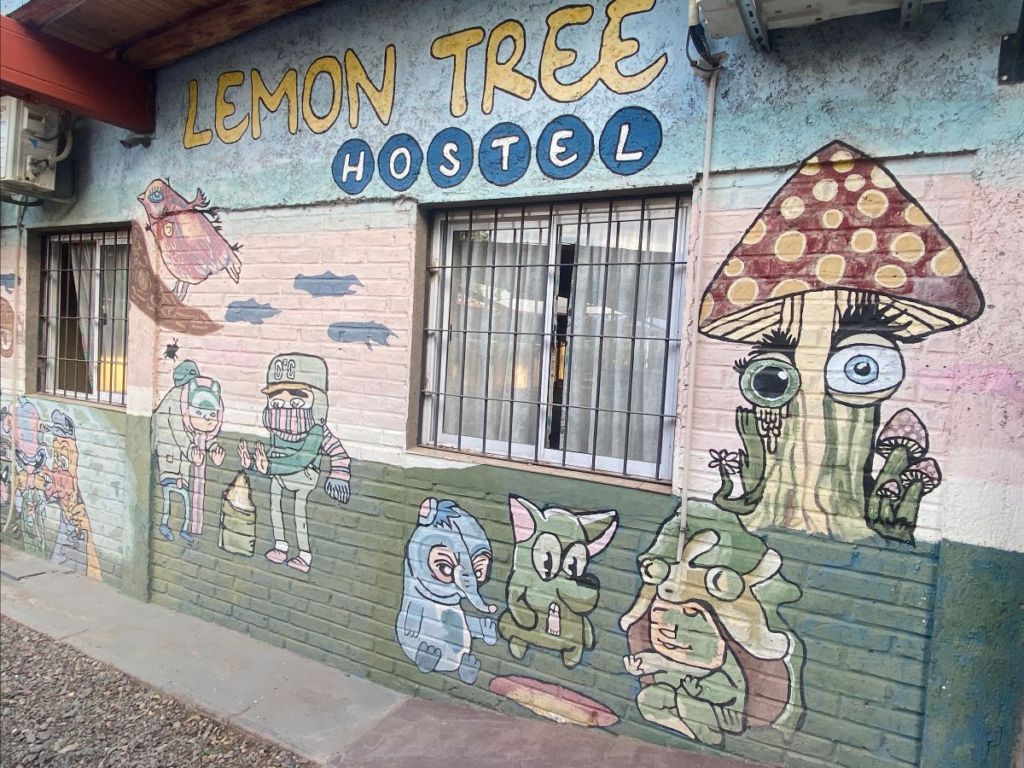
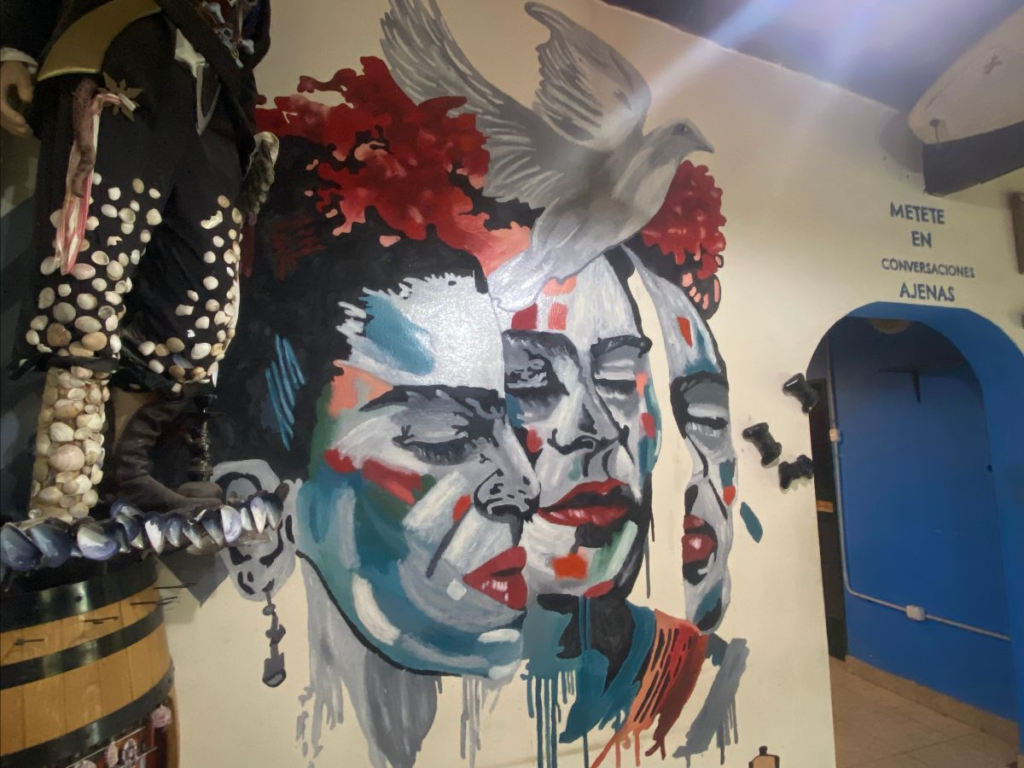
Obviously, I had some questions, so I interviewed the hostel owner, Matias.
“I just enjoy giving the hostel the flavor of things that I like,” Matias explained. “When I watch a show or a movie, and it makes me feel some kind of way, I see murals as a way to express that.”
Clearly, Matias’ taste is extremely varied, and he has no fear of mish-mashing styles one next to another. He says people didn’t always support his decision to make art such a central part of the hostel.
“In the beginning no one came; people told me not to paint the walls, they said the hostel was too far from the city.”
Then, after six years of building out the amenities and trying to attract travelers, he had a breakthrough: “In 2019, I accidentally put the wrong price. I got the exchange rate wrong and I put it up for $6 a night, and people came running. It was a business strategy that I didn’t even know I was doing.”
Now, Matias has several elements working together that make the hostel go ‘round. The artwork is a main attractor, and with horseback and bike tours in the mountains, he turned the hostel’s distance from the city into a selling point. Matias also converted a busted school bus into a tattoo parlor, which has become a business in itself: “Many tattoo artists who are internationally recognized have done seminars here in the hostel,” he said.
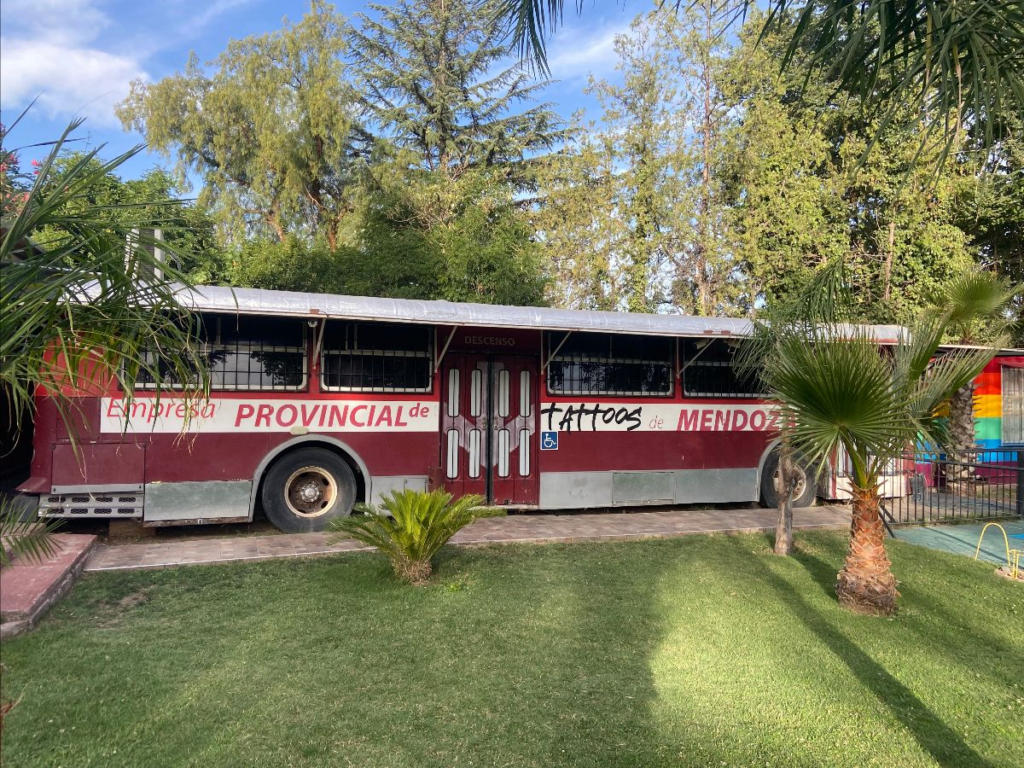
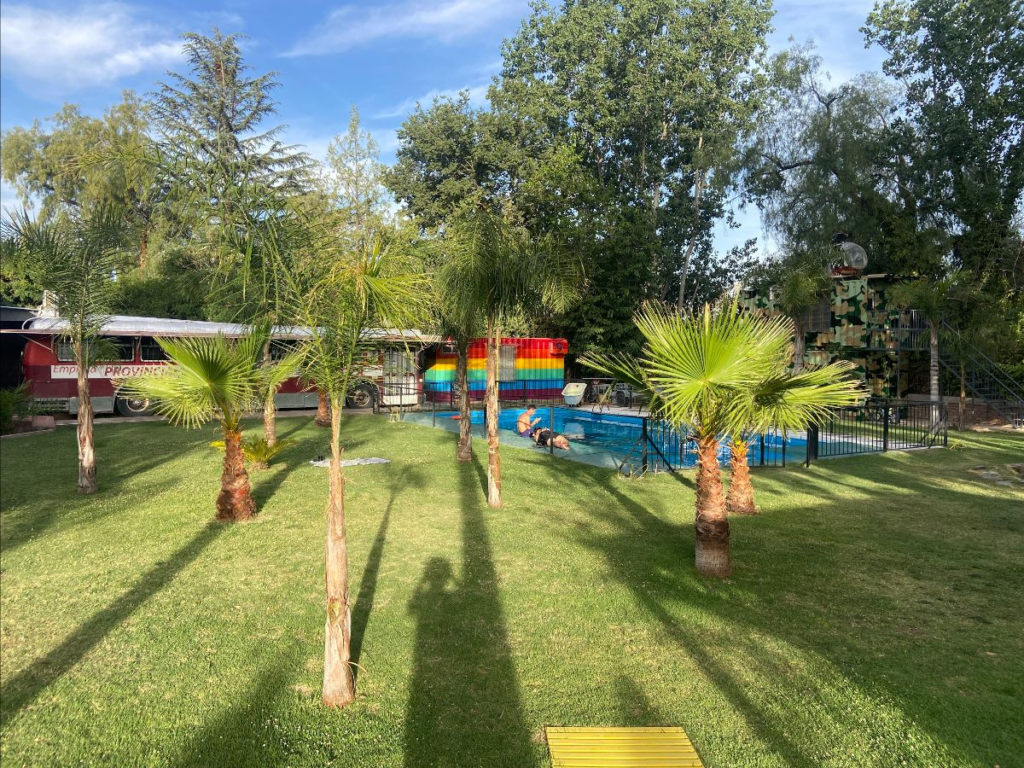
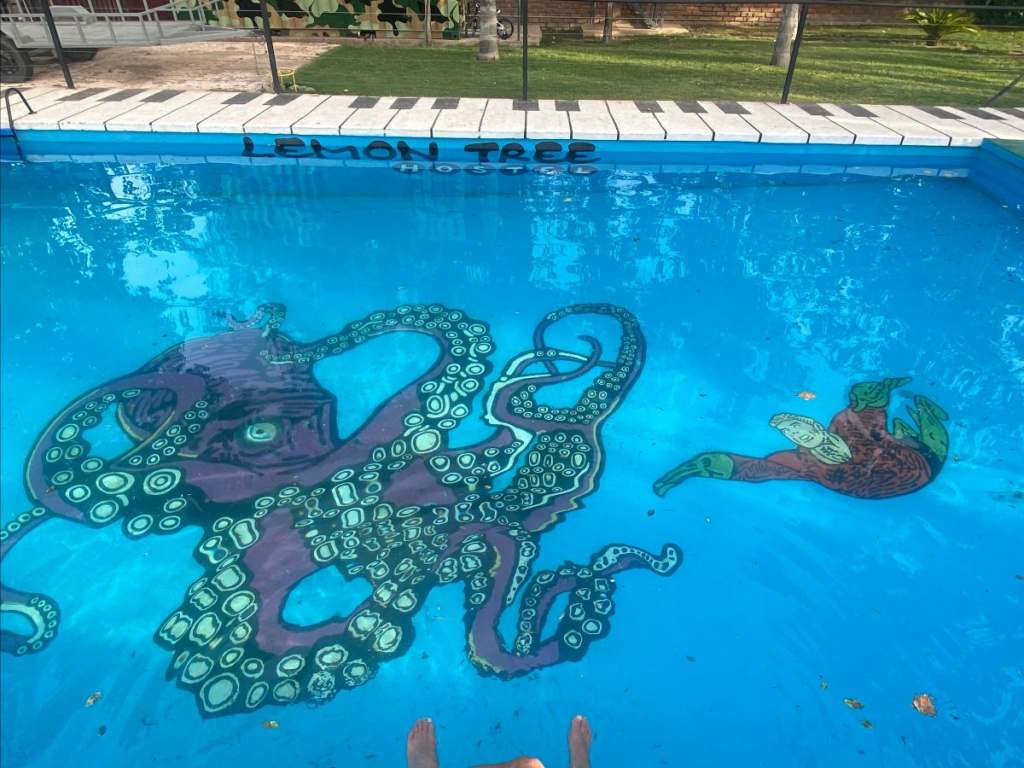
In the end, I can only describe Lemon Tree as an odd mix of tasteful touches and unsettling surprises. Matias had clearly put his heart and soul into the place, which took the fear factor out of the bloodthirsty mannequins. Between the mishmashed murals, clean and functioning pool, and shady palm trees, Matias is one of few hostel owners who has successfully merged comfort, functionality, and unapologetically weird art in one hell of a place to kick back.
Until next time,
Lucas